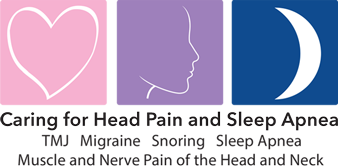
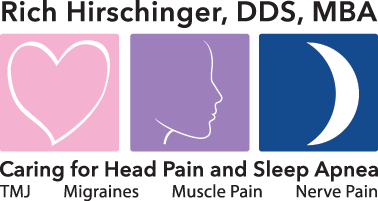
Diplomate American Board of Orofacial Pain
9615 Brighton Way, Suite 323
Beverly Hills, CA 90210
888.981.8981
Supratrochlear Supraorbital Infraorbital and Auriculotemporal Trigeminal Nerve Blocks
Four trigeminal nerve branches that can cause facial pain are the supratrochlear, supraorbital, infraorbital, and auriculotemporal nerves. The supratrochlear and supraorbital nerves are branches of the ophthalmic nerve, the first branch of the trigeminal nerve. The infraorbital nerve is a branch of the maxillary nerve, the second branch of the trigeminal nerve. The auriculotemporal nerve is a branch of the mandibular nerve, the third branch of the trigeminal nerve.
Supratrochlear Nerve Block
A supratrochlear nerve block is an injection of a local anesthetic to block the supratrochlear nerve. The supratrochlear nerve is a branch of the ophthalmic nerve, which is one of the three branches of the trigeminal nerve. The supratrochlear nerve provides sensory innervation to the skin on the forehead and scalp. This nerve block is often performed for pain relief in specific areas of the forehead and the scalp.
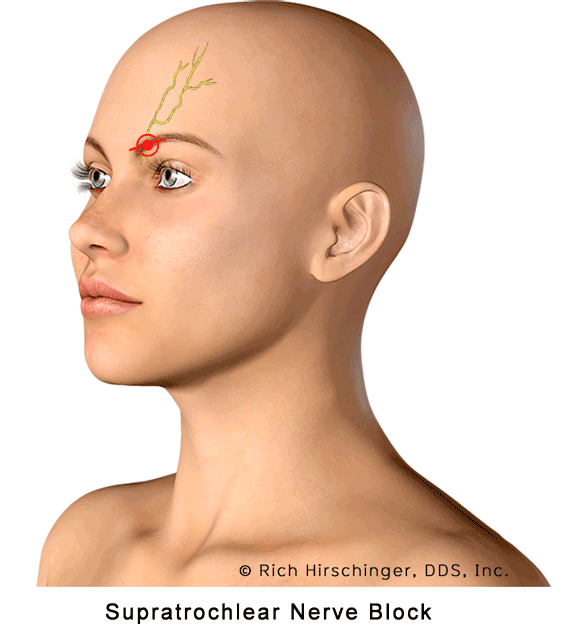 |
|
The target for injecting a supratrochlear nerve block is a notch that can be palpated just lateral to the midline of the eye's orbit. The red area is the region that is usually numbed with a supratrochlear nerve block. Supraorbital Nerve BlockA supraorbital nerve block is an injection of a local anesthetic to block the supraorbital nerve. The supraorbital nerve is a branch of the ophthalmic nerve, which is one of the three branches of the trigeminal nerve. The supraorbital nerve provides sensory innervation to the skin on the forehead, scalp, and upper eyelid. This nerve block is often performed for pain relief in specific areas of the forehead and the scalp. |
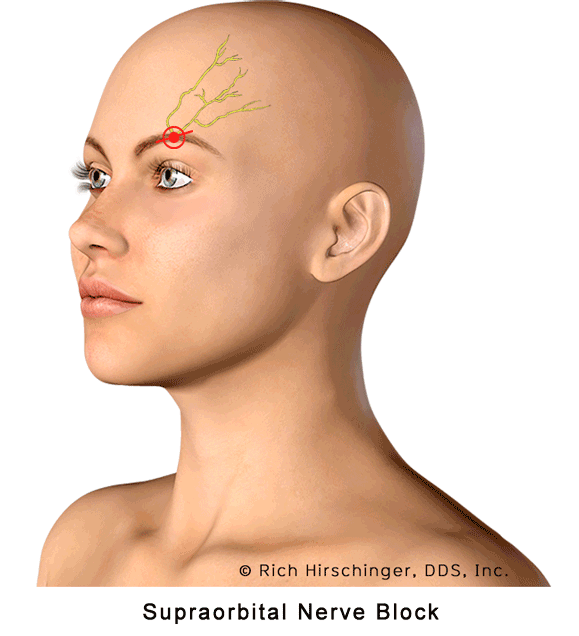 |
|
The target for injecting a supraorbital nerve block is a notch that can be palpated in the midline of the upper orbit of the eye. The red area is the region that is usually numbed with a supraorbital nerve block. Supratrochlear and Supraorbital Nerve Blocks |
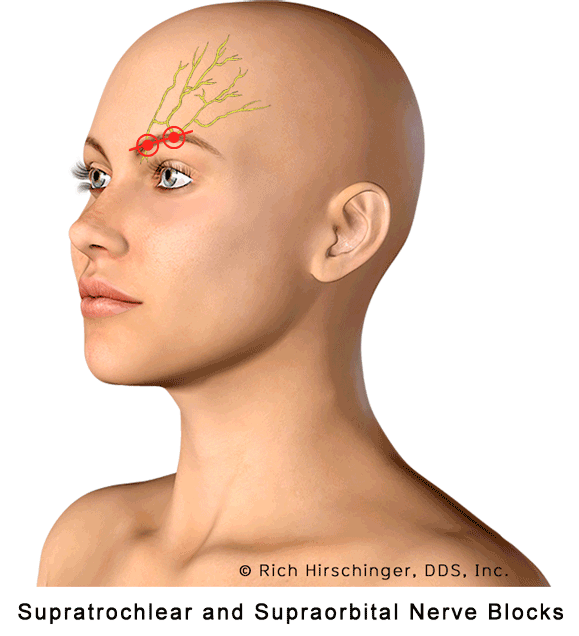 |
|
When both the supratrochlear and supraorbital nerves are numbed, the forehead, part of the scalp, and the upper eyelid should feel numb. Infraorbital Nerve BlockAn infraorbital nerve block is an injection of a local anesthetic to block the infraorbital nerve. The infraorbital nerve is a branch of the maxillary nerve, which is one of the three branches of the trigeminal nerve. This nerve provides sensory innervation to the lower eyelid, upper lip, the side of the nose, and the anterior teeth. A local anesthetic around the infraorbital nerve is injected to block its function and temporarily relieve pain in specified areas. |
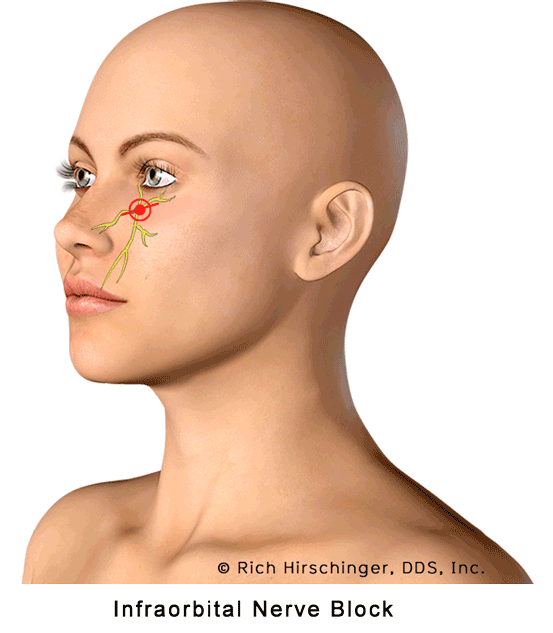 |
The target of the infraorbital nerve block is a notch on the lower orbit of the eye, which can usually be felt with palpation. The red area is the region that is usually numbed when an infraorbital block is given.
Auriculotemporal Nerve BlockAn auriculotemporal nerve block is a procedure that involves injecting a local anesthetic to block the auriculotemporal nerve. The auriculotemporal nerve is a branch of the mandibular nerve, which is one of the three branches of the trigeminal nerve. The auriculotemporal nerve provides sensory innervation to certain face areas, including the temporomandibular joint, known as the TMJ, external ear, and temporal region. Blocking this nerve can be useful in ruling in or ruling out the temporomandibular joint as the source of a patient's pain. If the anesthesia does block the pain, then the auriculotemporal nerve is the source of the pain. |
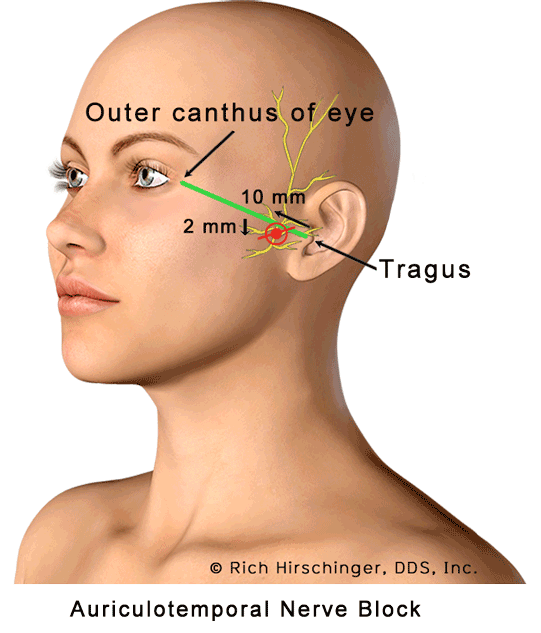 |
| The target of an auriculotemporal nerve block is obtained when a line is drawn using the eye's outer canthus and the ear's tragus as landmarks. Measure 10 mm in front of the tragus on the line and then measure 2 mm below the line to obtain the target to inject the auriculotemporal nerve. The red area is the usual region numbed when an auriculotemporal nerve block is given. |






